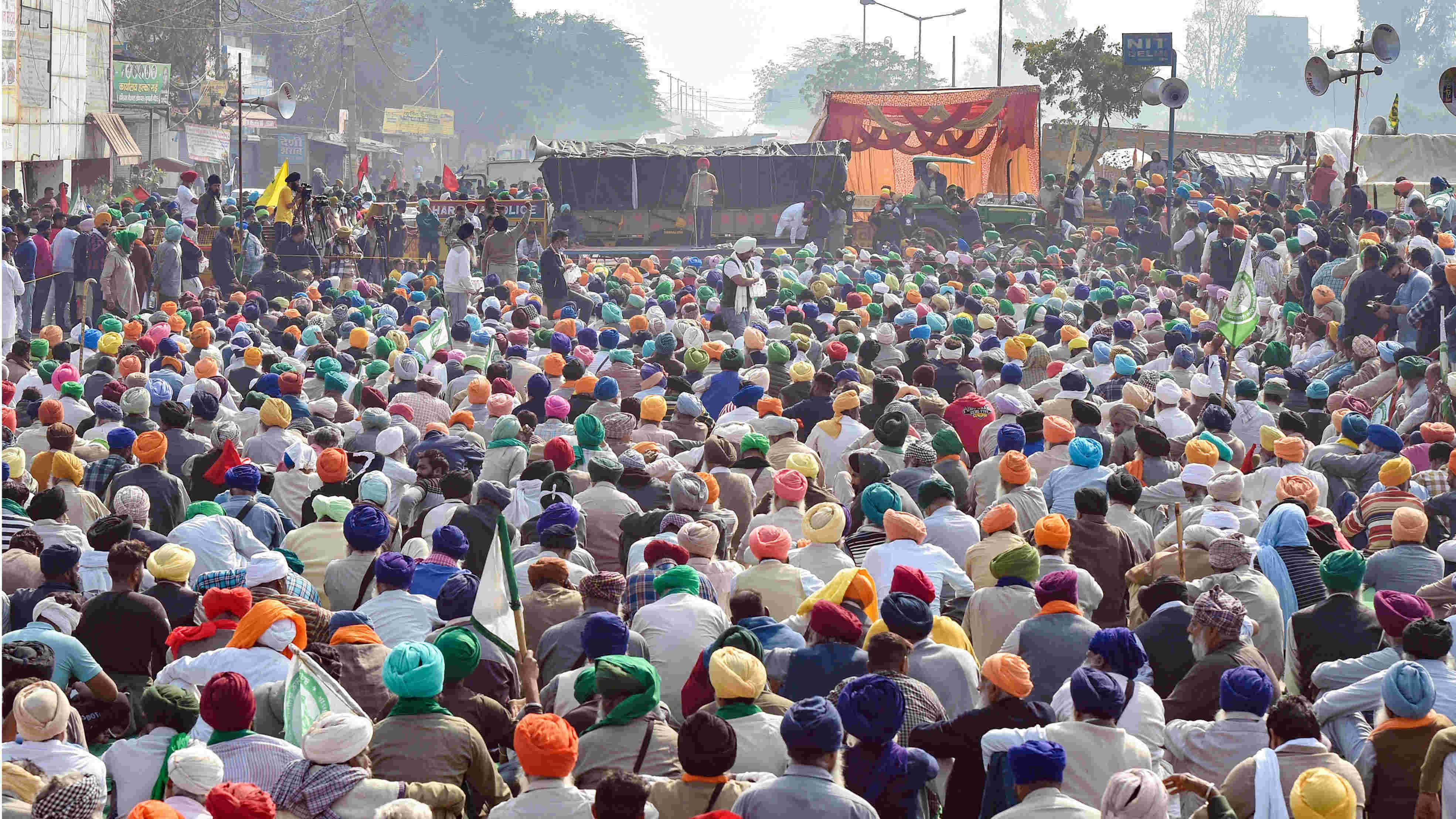The farmers’ movement is now entering a new phase. While the government is trying to tire out the protesters and push the protest out of the media’s glare, the farmers are gearing up to make the protest more inclusive. They are now talking about the agrarian crisis and the need for a minimum support price in all states. It is no longer going to be about the protection of mandi and MSP in Punjab and Haryana alone. Committees have been formed to reach out to farmers in other states as well as to gather information about state-specific problems related to agriculture, apart from addressing the common problems of debt, lack of infrastructure, the absence of assured returns, high cost on inputs and middlemen, among others. The movement is no longer about gaining subsistence living but about the agrarian crisis afflicting small and medium farmers. The participation of the youth and women has made a difference to the way the movement is being envisaged as one beyond immediate interests and more about the future of the younger generation. It is now willing to debate the very corporate model of development.
The protest leadership is also transitioning. After being led by Jats and Sikhs, panchayats at various places in Punjab and Haryana are reaching out to Dalits to join the protests. Punjab has the largest Dalit population in India. Panchayats and khaps, in order to include Dalits, are discussing caste-based discrimination. They are also deliberating on the issue of prejudice against Muslims and introspecting where they went wrong by supporting the Bharatiya Janata Party and by consenting to the communal violence in Muzaffarnagar. Farmers invited Muslim leaders to address the protests and there was a kind of performance that was akin to ‘truth and reconciliation’. These are explosive changes in the otherwise conservative rural hinterlands that are combining the intricate cultural issues ‘internal’ to the rural community with the ‘external’ economic assault on the sovereignty of the agrarian economy. Farmers have perceived the complex inter-relationship between the need to bring about internal social change and to defend themselves against an external assault. In fact, the second phase of the farmers’ protest is no longer about the kisan but about insaan.
There is also the possibility of a second phase of the anti-CAA protests after the pandemic subsides, given that the Union home minister has referred to the formulation of the rules and its implementation after the current round of assembly elections. The anti-CAA protests must observe the developments and changes brought about by the farm protests to understand how the moral universe is built in order to reach out to a larger number of social groups cutting across cultural differences. It is in building solidarities, and not in making appeals to the State and invoking the Constitution, that resistance can meet with success.
The anti-CAA protests, too, began by making the right moves. It was led by women. There were declarations that this was to be a protest to save democracy and the Constitution. It began to spread beyond Shaheen Bagh to other cities and smaller towns in North India. However, the anti-CAA protest, unlike the farmers’ movement, seems to have reduced itself to an agitation by and for Muslims. Further, it got stuck in its agenda with its appeal to repeal the Citizenship (Amendment) Act.
The second phase of the anti-CAA mobilization, if it is to be started after the pandemic, needs to move into more universal registers and focus on appealing to the larger sections of the Hindu population that remain indifferent. A CSDS survey revealed that a majority of the respondents from Hindu society support the CAA. Herein lies the confidence of the current regime in pushing for these changes.
The question that the anti-CAA protesters must address is the need to create the kind of moral valency that the farm protest has generated. They need to ask themselves what kind of symbolic representation would allow them to gain the support of the larger society beyond the Muslim community. Significantly, the CSDS survey had also found that most Hindu respondents supported a plural India — not a theocratic Hindu rashtra. But when it came to the CAA, they responded differently. This only shows that the social imaginary and the moral signification of being a Muslim ought to be resignified. The anti-CAA movement needs to address the points on which majoritarian mobilization is based.
In an interview in The Caravan, a rioter who took part in the Delhi riots said that he regrets taking part in the violence but ‘Muslims cannot be trusted and they will consolidate and organize attacks on Hindus and we need to be vigilant.’ This intangible anxiety is driving the consent for the violence against and the marginalization of Muslims. It is this inexplicable anxiety of a majority community against a numerical minority that is making compassion towards Muslims difficult. No amount of violence seems to convince the majority that a Muslim can be a victim of unfair violence. Muslim mobilization in India, as part of the anti-CAA protest or otherwise, has to create narratives to quell this anxiety that is not based on evidence. If farmers can gain support as annadaatas, there is no reason why a larger solidarity cannot be built for Muslims with a narrative that is willing to engage the common Hindu and not just the State.











